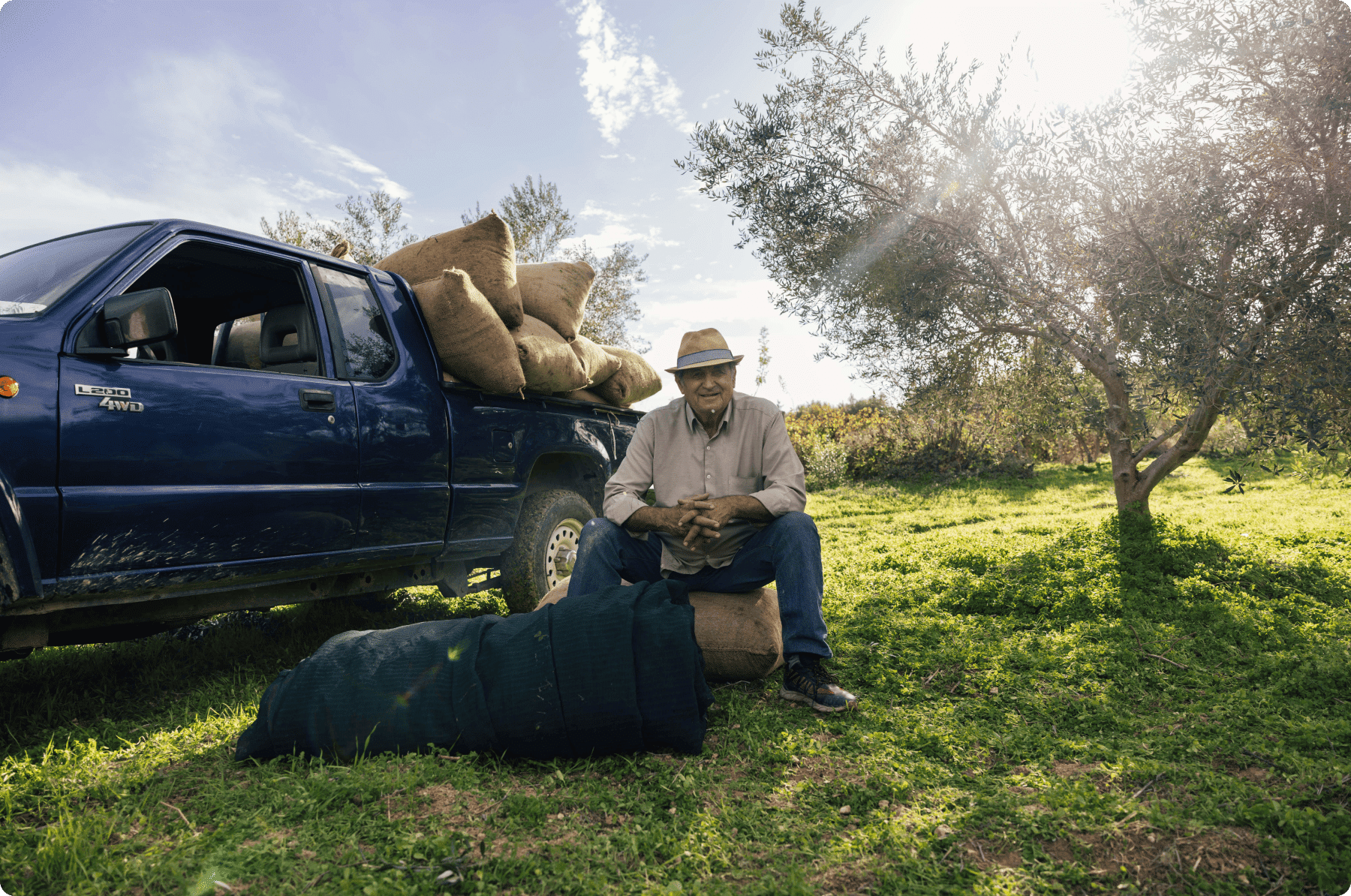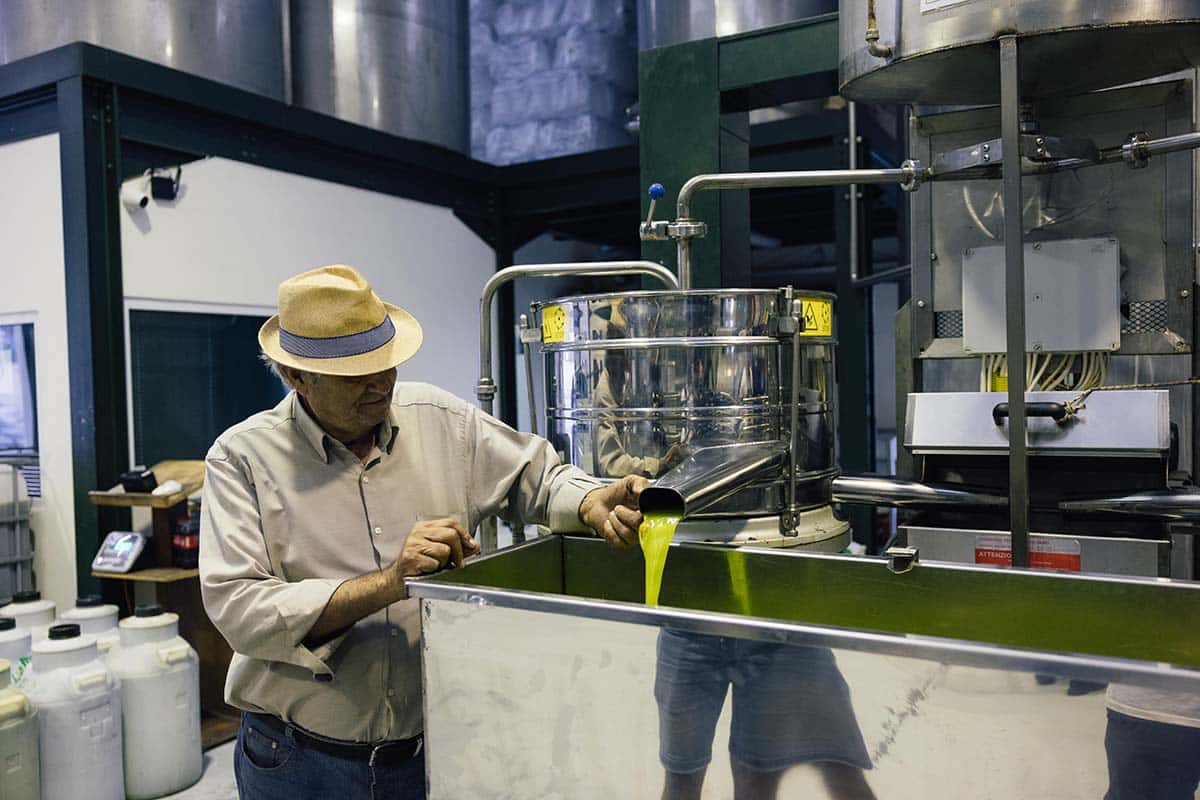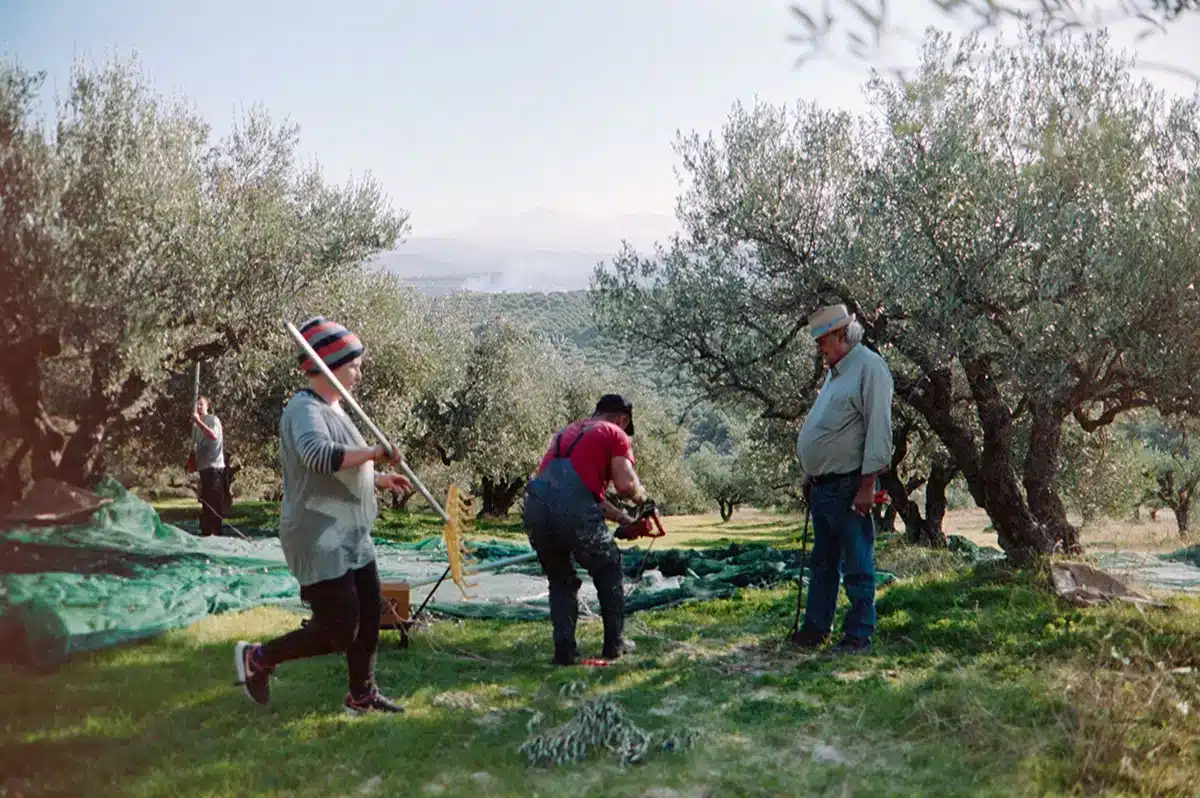Did you know that there are 4 types of olive oil, which can also be further divided into different categories? This mainly depends on how the specific olive oil is made. In this article, we focus on one type: extra virgin olive oil. How is extra virgin olive oil made? Read on to find out!
A quick refresher: 4 types of olive oil
There are 4 types of olive oil: olive oil, blended refined olive oil, pomace olive oil, and inedible olive oil. We’ll leave inedible olive oil aside for now, as it cannot be consumed. Pomace olive oil (when we produce it) is made by heating the remaining high-quality fresh olive pulp to 60 degrees Celsius in a kettle. The raw pomace olive oil must then be refined before it becomes ‘edible.’ To enhance the flavour, a blend of olive oil from the first pressing and/or refined olive oil can be added.

Blended refined olive oil is refined olive oil mixed with olive oil from the first pressing. Refining means that ‘impurities’ are removed from the oil through a series of chemical and physical processes, but in doing so, it loses its taste and aroma. This refined oil is then mixed with other olive oils from the first pressing to give it some flavor and aroma and make it ‘edible’ for humans.
In the case of olive oil, it refers to olives from the first pressing, solely through mechanical pressing, which does not alter the chemical composition of the oil. The olives used for this olive oil may only be washed, centrifuged, and filtered; no other treatments are allowed.
When is something extra virgin olive oil?
Olive oil can be divided into three types: extra virgin olive oil, virgin olive oil, and olive oil. Extra virgin olive oil is the flagship. This olive oil is cold-pressed directly. In this way, most of the nutritional values are preserved. The median score for the 12 olive oil defects must be 0, and the median for fruitiness must be above 0. The acidity level should not exceed 0.8 percent. This results in an olive oil with a lot of flavour, where all the natural vitamins and minerals are preserved. It is highly suitable for use in cold dishes like salads, but as we already know, it is also great for cooking and frying.

By the way, do you want to recognize the best olive oil? We’ll help you with that! Now, let’s move on to how extra virgin olive oil is made?
How is extra virgin olive oil made?
Ok, we now know when something is extra virgin olive oil. But how is extra virgin olive oil made? In short, it goes as follows. Every winter (around November/December), we harvest the olives on Crete by gently knocking them off the trees by hand. We catch them in nets and bring all the harvested olives to the press at the end of the day.
On the same day, the olives are washed, ground, and cold-pressed. The result is immediately extra virgin olive oil. A pure and honest product full of passion and flavour. The olive oil is then stored in large barrels for a months-long process of natural self-filtering. After that, the extra virgin olive oil is bottled (in glass or tin) and transported to the Netherlands. Fresh from tree to bottle!

There is one more step before the process mentioned above: how you care for the olive trees. When you do this according to organic standards (such as not using synthetic fertilizers and pesticides), you can call your olive oil organic. You can read more about organic olive oil here, which we also produce!
More extra virgin olive oil?
How is extra virgin olive oil made? You know it now. But what is the best extra virgin olive oil and can you cook with extra virgin olive oil? We cover that and more in our olive oil magazine. Want to buy Greek olive oil?
Find your size












